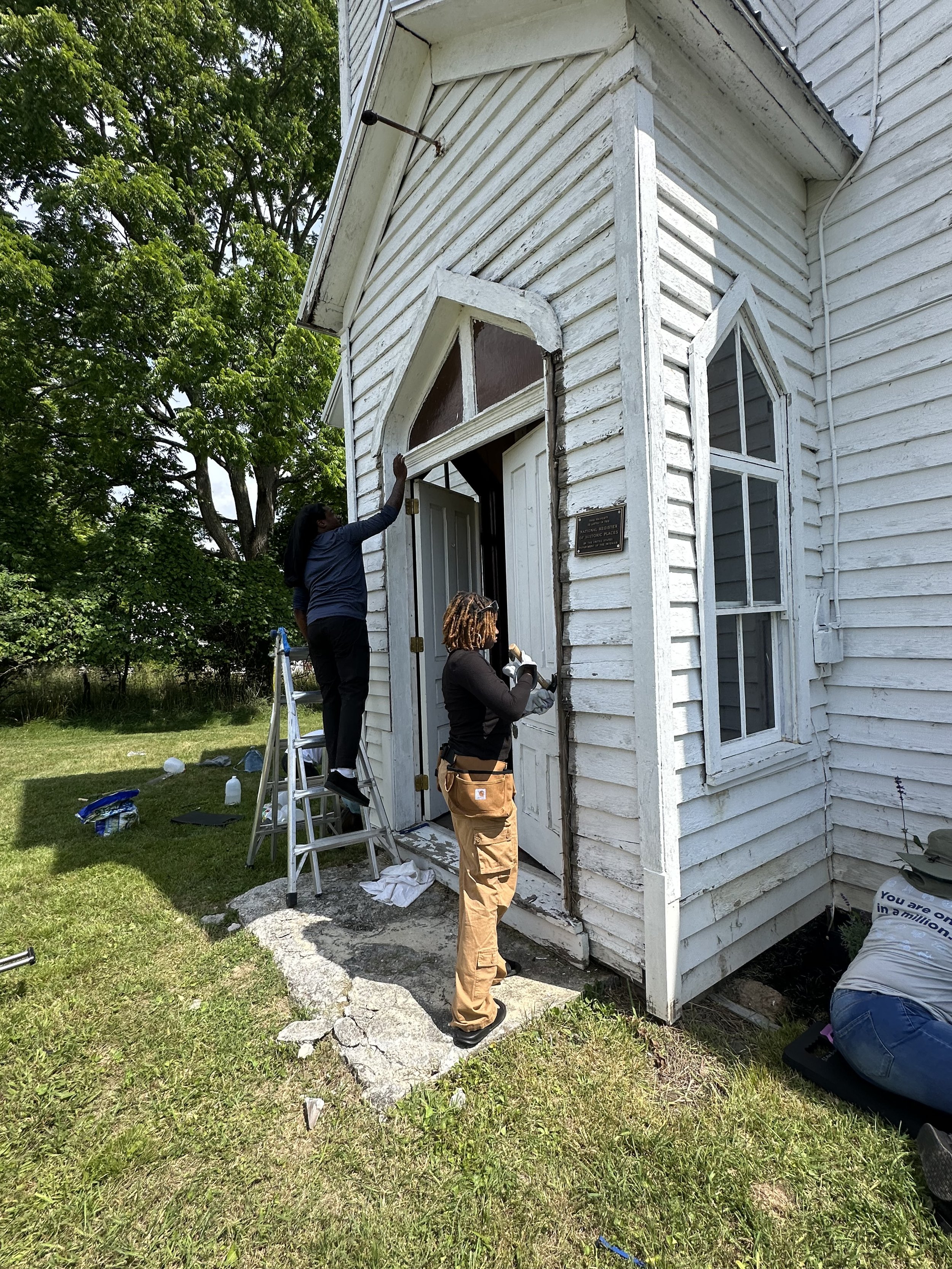By Lauren Bowlin
Serving with Monongahela National Forest
Hello! My name is Lauren Bowlin, and I am the Archaeological Technician AmeriCorps for the Gauley Ranger Station in Richwood, WV. Today, I wish to share with you some recent news for our site, as well as talk about the relationship Pleasant Green has with the Monongahela National Forest. On June 19, 2024 (Juneteenth!), Pleasant Green underwent two restoration projects in collaboration with the Forest Service, Advisory Council on Historic Preservation, AFNHA AmeriCorps, and Cultural Heritage in the Forest. While Pleasant Green is NOT on FS land, the FS creates partnerships like these within local communities to help support efforts of preservation. Pleasant Green's direct connection to Watoga State Park, the site of an early 20th-century Black Separatist Community, ties our mission together in a common purpose.
Cultural Heritage in the Forest, or CHIF, is a program developed by the Advisory Council on Historic Preservation and the USDA Forest Service. It is in partnership with the White House Initiative on Advancing Educational Equity, Excellence, and Economic Opportunity with Historically Black Colleges and Universities. African American professionals and students from all over the U.S. unite in this program to be involved and exposed to the many departments of the FS, including anthropology, archaeology, and historic preservation. Hopefully, these efforts encourage a diversifying of our program and new voices being integrated into the workings of our National Forests. This year, we hosted nine brilliant students led under Dr. Latif Tarik, Dr. T. DeWayne Moore, and Forest Service Archaeologist Margaret Hangan.
The students, under the tutelage of the FS Heritage Team, repaired the vertical door casings, painted the threshold and skirt, built two dual garden bed frames, and planted native plants in our efforts to restore and beautify Pleasant Green for future generations. Paden Vargo, our Architectural Historian, and Jon Green, our Forest Archaeologist, taught the students on how to safely use automatic saws, planers, and sanding machines, and led all carpentry. Aleyna Weitzner, our Restoration and Botany Tech AmeriCorps, and I led the effort to garden and prune. We planted mountain mint, lavender, hollyhock, coreopsis, blue-eyed grass, and other assorted local flora. Every act of construction we engaged in was purposefully submerged in the greater historical context, allowing the students to explore the inside of the church after a lesson in the church's creation, and to pay reverence and respect to the cemetery.
This partnership is overwhelmingly meaningful to us here at the Forest and AFNHA - connecting with Black students and sharing with them our state’s history is invaluable to the future of diverse involvement, public awareness, and funding for these sites. There is no West Virginia History without Black History, and it was our honor to share with them this part of their cultural past. Often, we learned more from the student's perspectives on the site, and how they connected this church to unique places of importance back home, then we could hope to teach them. There are plans to invite those who can back in August, to finish the door repairs, replace the cement step, and to design new signage.
We are extremely grateful to Ruth Taylor, the previous Secretary of the Pocahontas County Historic Landmarks Commission, for all her help organizing and supporting the event. Without her previous research and work on Pleasant Green, none of this would be possible. If you want to learn more, please visit the website I built, pleasantgreenchurch.com!



